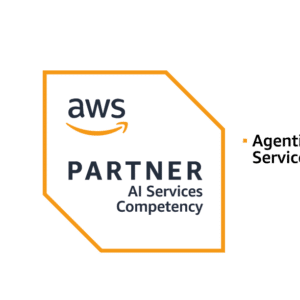
Disaster recovery is not just a precautionary measure; it is an essential part of maintaining business continuity and protecting your valuable data. But how can you ensure the security and resilience of your data on AWS?
At DinoCloud, as an AWS Premier Tier Services partner, we specialize in cloud services and offer innovative and customized solutions to optimize operational efficiency and data security for our clients. In this article, we will dive into the various strategies and capabilities provided by AWS for disaster recovery, empowering you to safeguard your data and minimize downtime.
Key Takeaways
- Disaster recovery is crucial for maintaining business continuity and protecting your data on AWS.
- Understanding the different disaster recovery strategies and capabilities offered by AWS is essential for effective implementation.
- Regular assessments with AWS Resilience Hub are key to ensuring the resilience of your AWS workloads.
- AWS provides robust backup and restore capabilities, including data replication and point-in-time recovery.
- The pilot light approach and AWS Elastic Disaster Recovery offer proactive and cost-effective solutions for disaster recovery on AWS.
Understanding AWS Disaster Recovery Strategies
To effectively implement disaster recovery on AWS, it is important to understand the different strategies available. AWS offers four main approaches, ranging from simple backup and restore to complex multi-Region setups. When choosing a strategy, it is essential to consider the data plane and control plane components within AWS services.
Key Concepts: Data Plane vs. Control Plane
The data plane is responsible for delivering real-time services within AWS. It handles the actual processing and movement of data, ensuring seamless performance and availability. On the other hand, the control plane is used for configuring and managing the environment, allowing users to define how their resources operate in the cloud.
Regular Assessments with AWS Resilience Hub
Regular assessments are crucial for ensuring the resilience of your AWS workloads and tracking progress towards recovery objectives. AWS provides the Resilience Hub, a powerful tool that enables organizations to monitor the health and performance of their disaster recovery infrastructure. With the Resilience Hub, you can conduct real-time assessments, identify potential vulnerabilities, and take proactive measures to strengthen your disaster recovery capabilities.
A Deep Dive into AWS Backup and Restore Capabilities
AWS provides robust backup and restore capabilities for data protection and recovery. Backup and restore is an effective approach to mitigate against data loss or corruption. It can also be used for regional disaster recovery by replicating data to other AWS Regions. In addition to data replication, it is important to consider the infrastructure, configuration, and application code required for successful restoration. AWS services such as Amazon S3, AWS Backup, and AWS CloudFormation offer comprehensive solutions for backup, restore, and infrastructure deployment.
The Pilot Light Approach for Proactive AWS DR Planning
In order to ensure proactive disaster recovery planning on AWS, the pilot light approach is a highly effective strategy. This approach involves replicating data to another AWS Region and provisioning a copy of the core infrastructure. By keeping essential resources always available, the pilot light approach ensures readiness for quick recovery in the event of a disaster.
Activating Core Infrastructure During Recovery
Activating the core infrastructure during the recovery process is a crucial step in the pilot light approach. This involves automating deployments and utilizing infrastructure as code (IaC) to deploy across multiple AWS accounts and Regions. By automating the deployment of the core infrastructure, businesses can significantly reduce recovery time and minimize the risk of errors during the recovery process.
Data Replication and Point-in-Time Recovery
Data replication is a critical element of the pilot light approach. By replicating data to another AWS Region, businesses can ensure that their data remains protected and readily available for recovery purposes. Additionally, implementing point-in-time recovery allows businesses to restore their data to a specific moment in time, further minimizing potential data loss and ensuring accurate restoration.
Implementing AWS Elastic Disaster Recovery
Implementing AWS Elastic Disaster Recovery (AWS DRS) is a crucial step in ensuring fast and reliable recovery of both on-premises and cloud-based applications. With AWS DRS, you can initiate secure data replication to a staging area subnet within your AWS account, enabling seamless and non-disruptive testing to ensure preparedness for recovery.
By leveraging AWS DRS, organizations gain the ability to launch recovery instances within minutes, utilizing the most up-to-date server state or a previous point in time. This ensures that critical applications and data can be quickly restored and accessed, minimizing downtime and data loss.
Cost-Effective DR Solutions with AWS DRS
One of the key advantages of implementing AWS DRS is the cost-effectiveness it offers for disaster recovery. Organizations can optimize their DR strategies by taking advantage of AWS’s scalable and pay-as-you-go pricing model. With AWS DRS, you only pay for the resources you use during the recovery process, allowing you to minimize costs while maintaining a high level of resilience.
Additionally, AWS DRS eliminates the need for dedicated hardware and infrastructure at a secondary recovery site, reducing capital expenditure and ongoing maintenance costs. The cloud-based nature of AWS DRS provides the flexibility to scale resources up or down based on the specific recovery requirements, further optimizing cost-efficiency.
By implementing AWS DRS, organizations can confidently address their disaster recovery needs while effectively managing costs, ensuring business continuity, and safeguarding critical data.
Conclusion
In conclusion, disaster recovery plays a pivotal role in safeguarding data resilience and ensuring uninterrupted business continuity on AWS. By gaining a comprehensive understanding of the diverse strategies and capabilities offered by AWS, organizations can effectively implement robust and secure disaster recovery plans. Whether you choose to harness the power of AWS backup and restore capabilities, leverage the proactive pilot light approach, or implement the cutting-edge AWS Elastic Disaster Recovery solution, you can confidently protect your valuable data and minimize downtime in the face of unforeseen circumstances.
At DinoCloud, we possess the expertise and experience to guide organizations through the complexities of AWS disaster recovery, helping them navigate challenges and unleash the full potential of AWS. Our tailored solutions are designed to meet your specific needs, ensuring maximum data protection and business resilience. Don’t let the fear of disasters impede your progress – in partnership with DinoCloud, you can embrace the power of AWS and achieve peace of mind.
Trust our team of experts to empower your organization with the most effective disaster recovery strategies. With DinoCloud by your side, you can conquer any adversity and emerge stronger than ever. Contact us today to embark on your journey towards a secure and resilient AWS environment.
FAQ
What is disaster recovery?
Disaster recovery refers to a set of strategies and procedures that an organization implements to resume its normal operations after being disrupted by a natural or man-made disaster.
Why is disaster recovery important on AWS?
Disaster recovery is essential on AWS to ensure data resilience and business continuity. It helps organizations minimize downtime and data loss in the event of a disaster, safeguarding critical information and maintaining operational efficiency.
What is the difference between the data plane and control plane in AWS?
The data plane in AWS is responsible for delivering real-time services and processing data, while the control plane is used for configuring the environment and managing resources.
How can AWS Resilience Hub help with disaster recovery?
AWS Resilience Hub allows organizations to assess the resilience of their AWS workloads and track progress towards recovery objectives. It provides valuable insights and helps ensure the readiness of AWS environments for disaster recovery.
What backup and restore capabilities does AWS offer?
AWS provides comprehensive backup and restore capabilities through services like Amazon S3, AWS Backup, and AWS CloudFormation. These services enable organizations to protect their data, infrastructure, and application code, facilitating effective disaster recovery.
What is AWS Elastic Disaster Recovery (AWS DRS)?
AWS Elastic Disaster Recovery (AWS DRS) is a comprehensive solution that enables fast and reliable recovery of on-premises and cloud-based applications. It allows for secure data replication to a staging area subnet in an organization’s AWS account, ensuring readiness for recovery.










